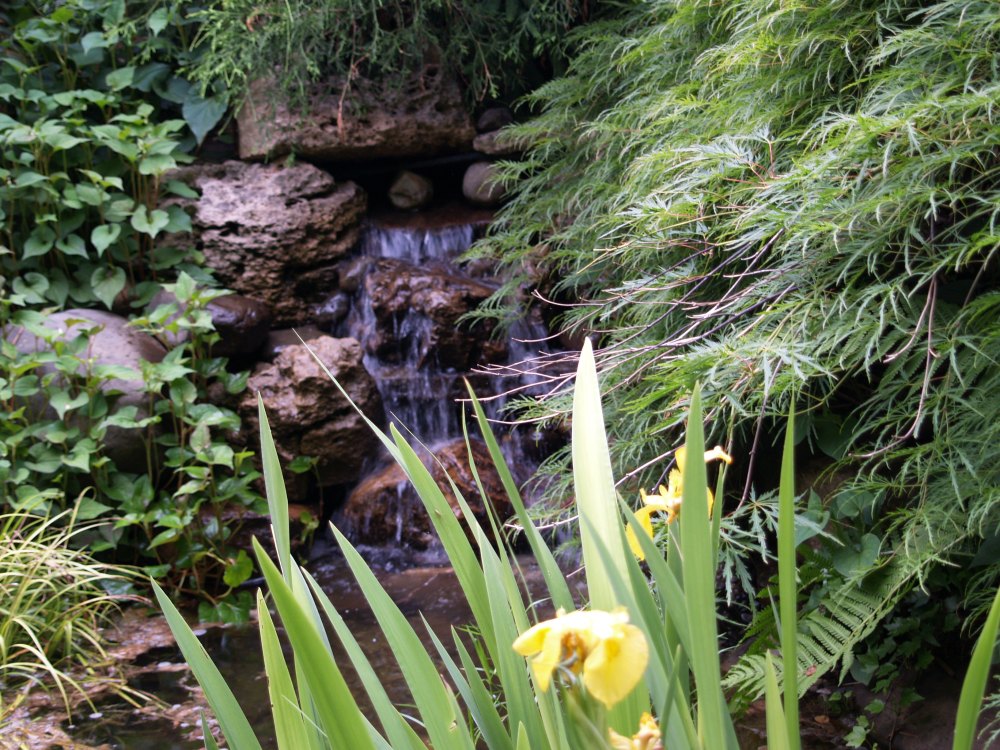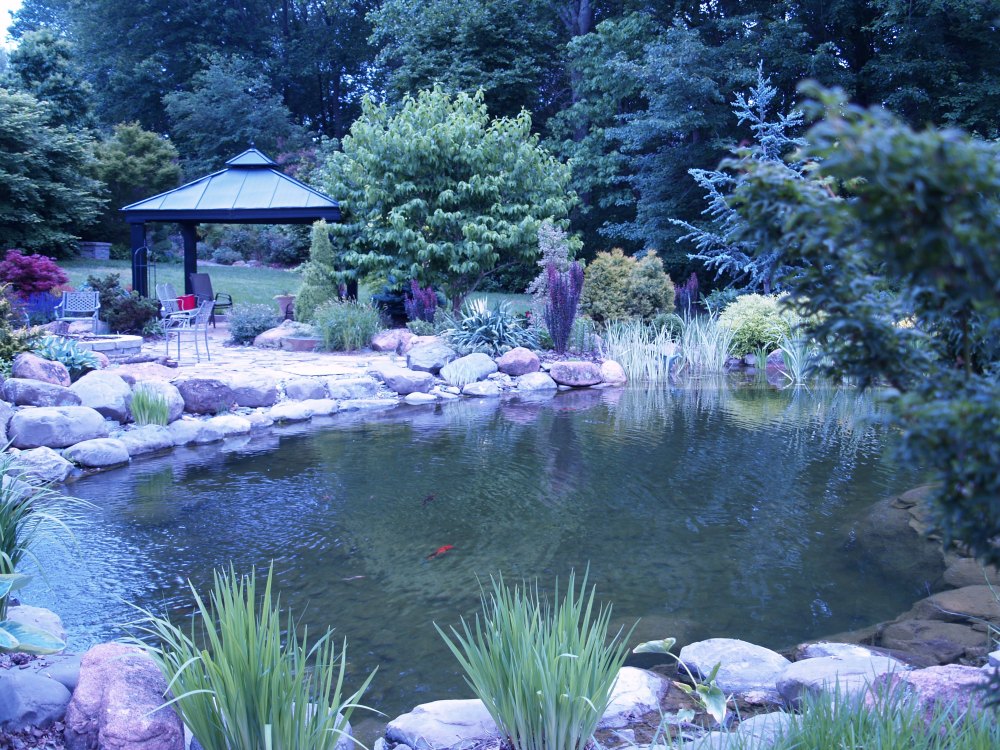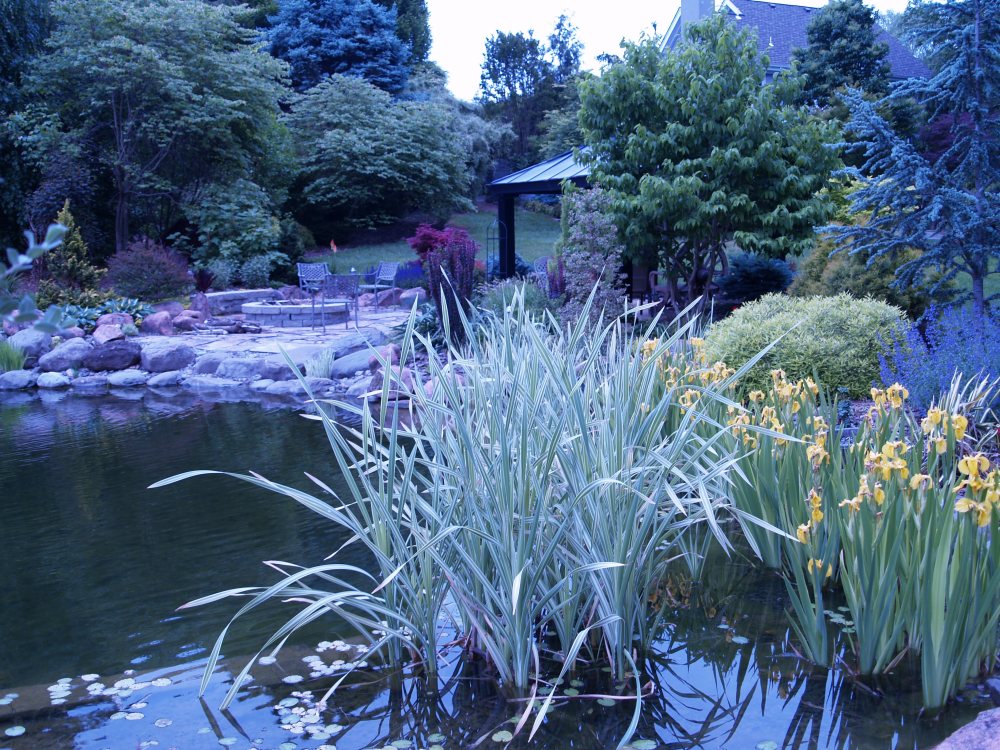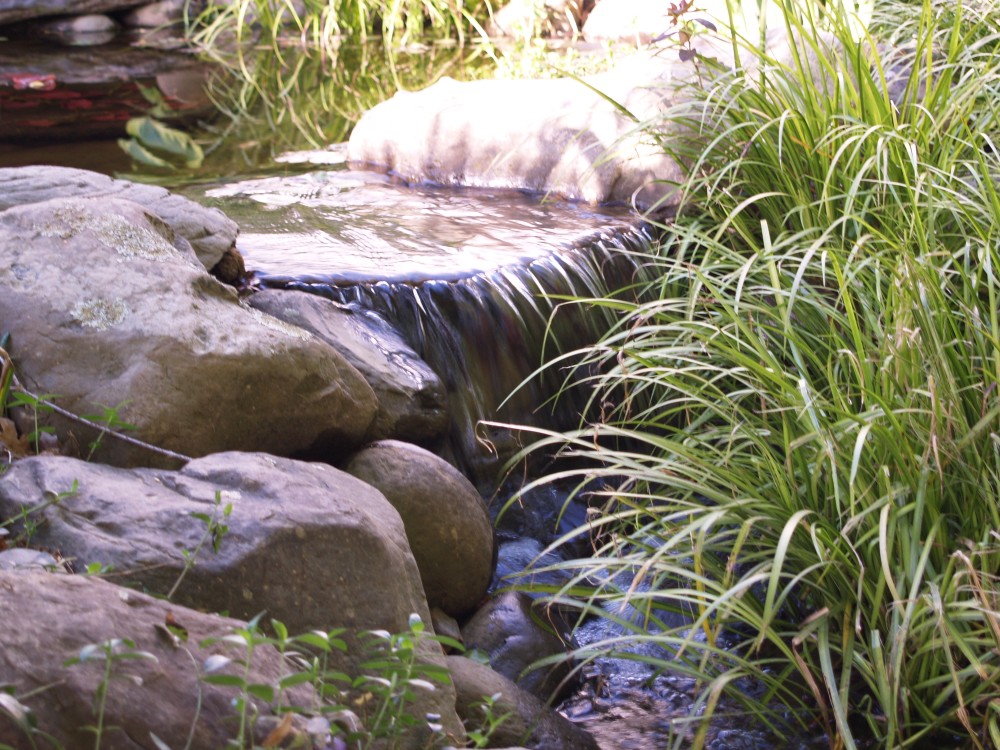For a few weeks in April, evenings in my garden are alive with the sounds of spring peepers, so today, inevitably as the course of nature would have it, the ponds are full of tadpoles. Not a few, but thousands, many thousands.
I have five ponds in the garden, and a sixth dirt bottom, wet weather pond at the back of the property, and all are visited by peepers in early spring. Jelly-like masses of eggs are deposited amongst the iris and acorus in the shallows, and many tadpoles arrive ten days later. For the two months they spend their life cycle in our ponds the tadpoles are welcomed guests, even pampered. I am forbidden by my wife from removing any string algae during this time since those feeding on it will perish in our compost pile, though I remind her that once they leave the safety of the pond it’s a hard, cruel world.
This spring I have had little string algae in any of the ponds (so the tadpoles have been relatively safe), but there are years when I could fill a truck with the stuff. I have never figured exactly why some of the ponds get string algae and others none, or why I have a struggle to keep up with it one year, and it’s no bother the next. References on the topic are far from definitive, but it seems that algae is encouraged by water with a high pH. Of course, if I tested to check water quality I would be more likely to be able to draw a corollary, but if the water was too alkaline what would I do then? I’m not dumping a bunch of chemicals in the ponds, no matter if it would help to avoid a bit of maintenance.
Before you get the idea that the ponds are filled with algae, and too much work to keep up with, let me set the record straight. Every day of the year I can see the gravel on the bottom of the ponds, even on the areas of the swimming pond that are five feet deep, with no chemicals and little labor. Besides a quick clean up in late March (a half day) I do practically no maintenance on the five ponds except for adding a bit of water when rainfall doesn’t keep pace with evaporation, and occasionally pulling some string algae. Two of the ponds have filter pads that must be cleaned (every two or three months I remove them and hose them off), but I’ve removed any filtration from the other ponds. On average from April through February, I spend no more than fifteen minutes a month on maintenance. On five ponds! I spend more time feeding the koi and goldfish.
I have five ponds because I wasn’t satisfied with four. The last to be constructed is the largest by far, and the most enjoyable. The thirty-five by forty-five foot pond (above) is nearly five feet at the deepest point, and is home to about fifty koi and a handful of goldfish. I expect that in a few weeks we’ll see the newest offspring, which could increase the population to more than a hundred. I’ve heard that koi will occasionally eat their young, so I suspected years ago that they would grow fat on the annual crop of tadpoles, but they seem to pay them no attention.
The yellow flag iris (above) in the ponds are just past their peak, and the Japanese iris are just beginning to bud and won’t bloom for several more weeks. Waterlilies are budding, though mine are partially shaded so they are behind those in sunny ponds that are blooming already. The variegated cattails and rushes, and the tropical canna lilies, callas, and elephant ears, will not reach their mature size for another month, so the ponds are more sparse than they will be through the summer, and the tropicals and perennials planted above the water line at the ponds’ edge will soon cover the mossy boulders and flop into the water.
By late in June the tadpoles will have grown legs and abandoned the ponds for a life on dry land, hopefully to return in future years to mate and lay eggs for the next generation. Through the summer the ponds will be a gathering place for many birds and deer, groundhogs, skunks, and possums visiting for a sip of water. The koi and goldfish will churn about in the water as my wife and I approach in the evenings, anticipating their daily feeding, and an occasional harmless snake will lurk between boulders that are half submerged in the shallows. Dragonflies and damselflies will dart to and fro, and water bugs will skim across the surface.
The spring peepers and tadpoles will be a pleasant memory, one of many delightful distractions with our garden ponds.
Your ponds are beautiful – and the presence of tadpoles is the sign of healthy ponds.
Enchanting place!